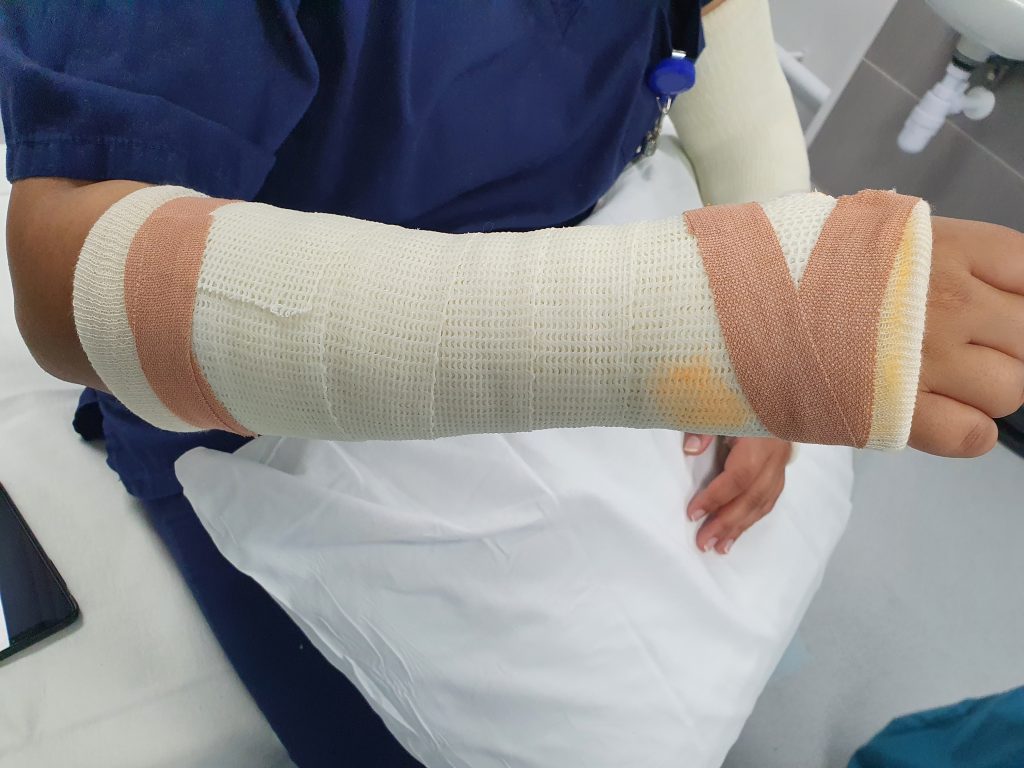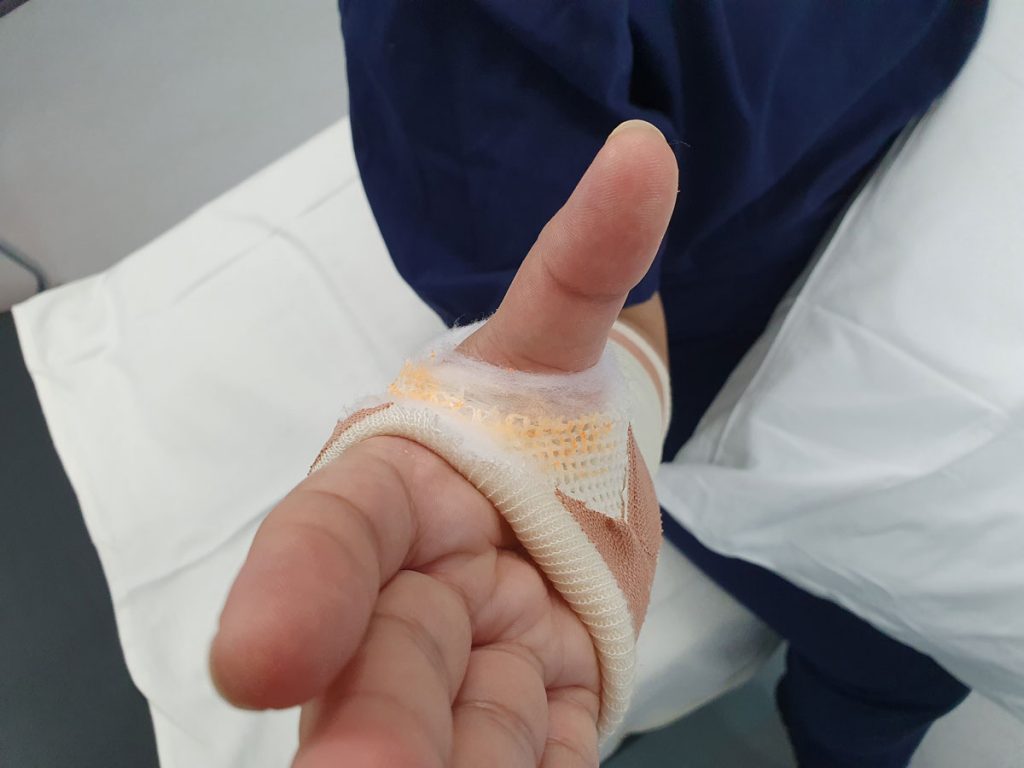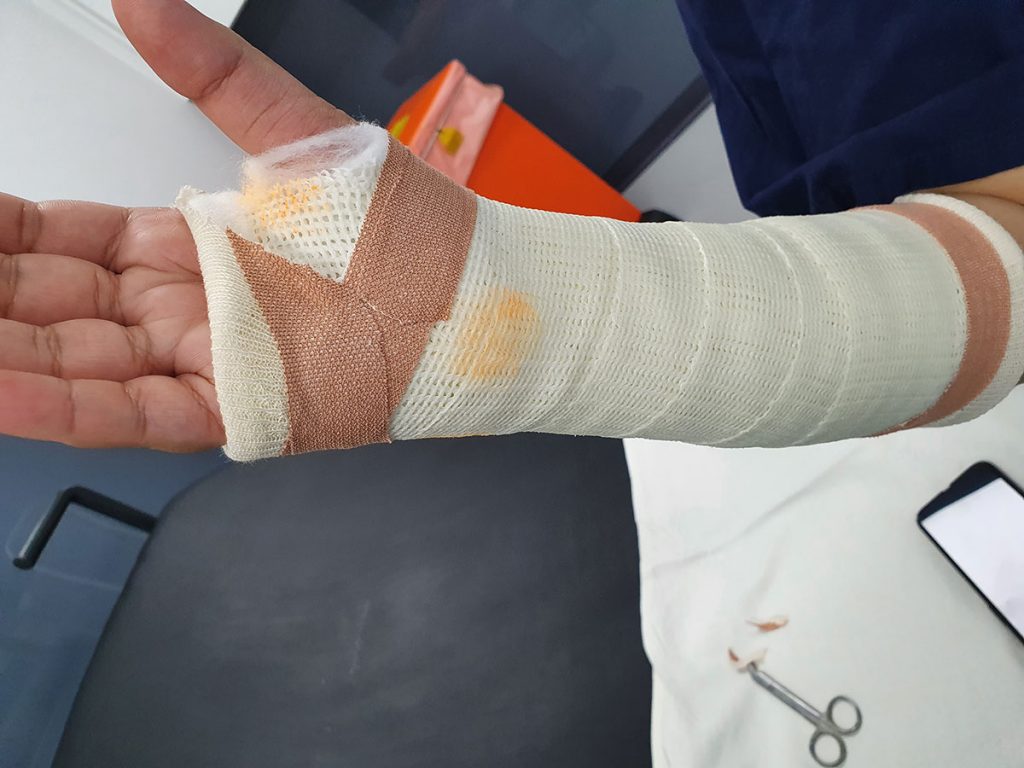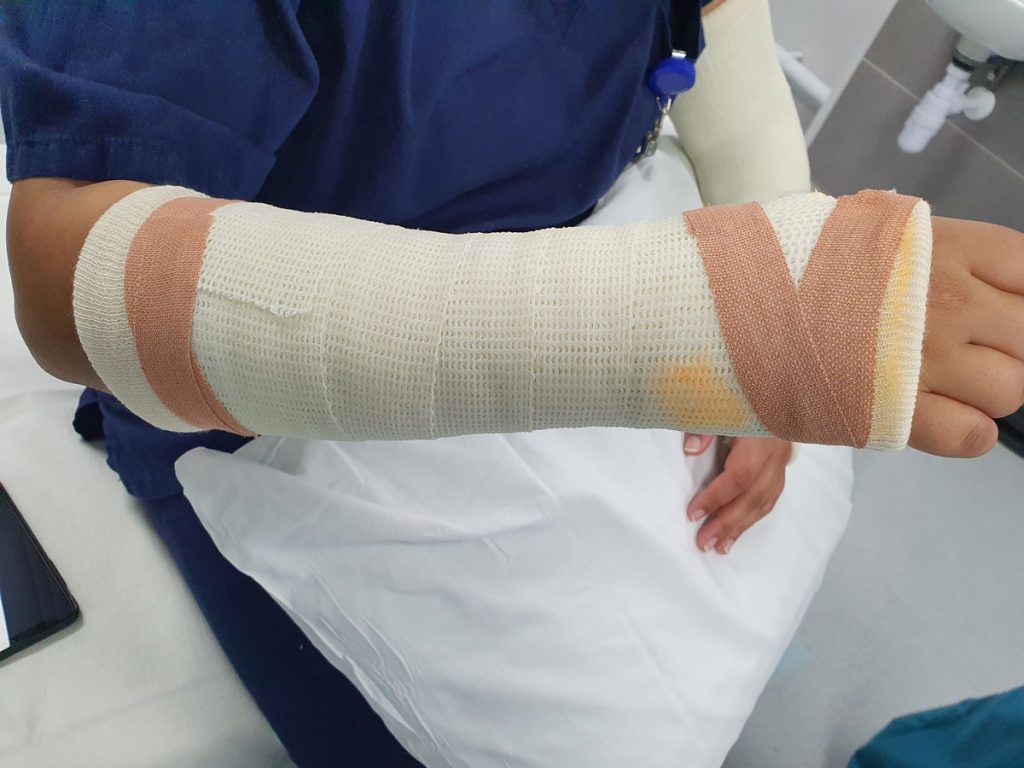Forearm cast


Your doctor’s advice
A doctor has assessed you and decided you need to go into a forearm cast.
This type of cast goes from below the elbow to below the knuckles, immobilising your wrist.
It is important that you follow the instructions given.





